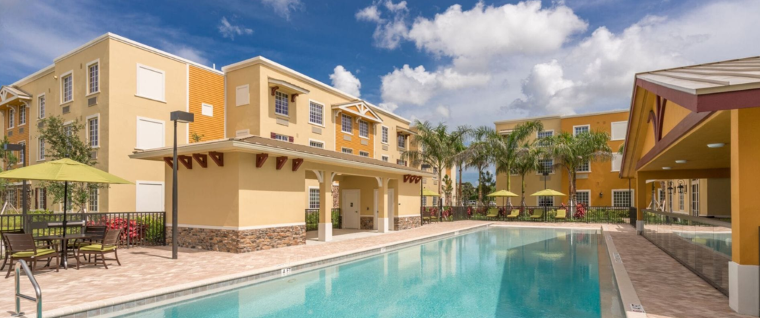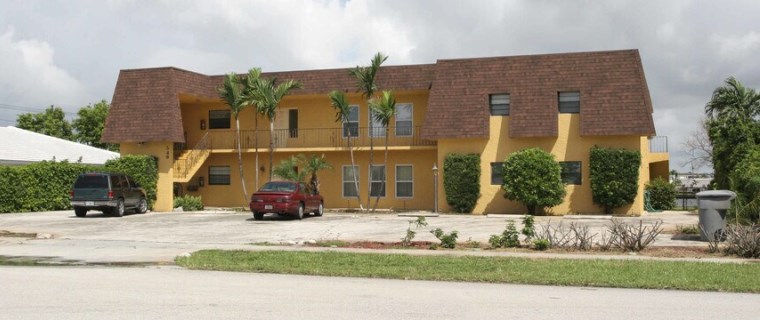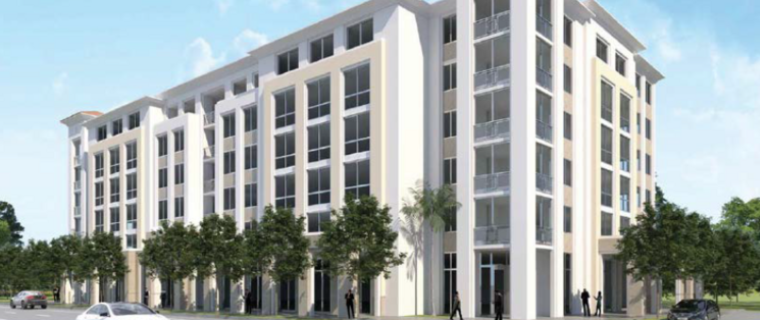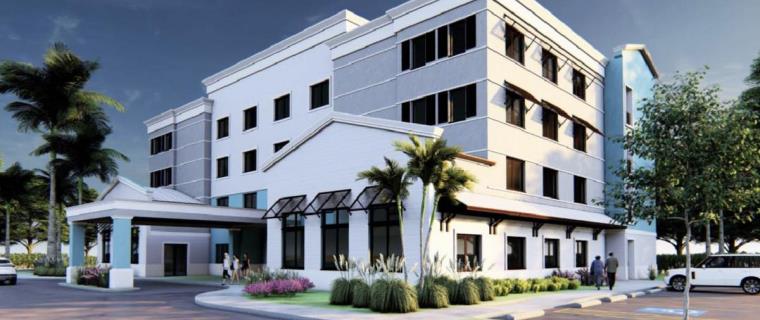Royal Senior Care and MG3 developed the 220-bed facility in 2017.
Tag Archive for: assisted living
The Palm Beach Memory Care facility in North Palm Beach sold for $17 million.
NPB Senior Development Co., an affiliate of Boca Raton-based Silver Cos., sold the 37,119-square-foot memory care facility with 58 living units at 639 U.S. Highway 1 to PBMC Propco LLC, managed by Douglas Brawn on behalf of West Palm Beach-based Alta Senior Living.
Silver Capital Commercial Funding, also part of Silver Cos., provided a $14 million mortgage to the buyer.
The price equated to $293,103 per living unit.
Source: SFBJ
More and more senior housing projects — built to resemble luxury multifamily communities with an increased emphasis on amenities — are popping up across the country as developers prepare for a population phenomenon that has never occurred in U.S. history: Adults over 65 will outnumber children under the age of 18 by the year 2035.
Florida, a long-popular destination for snowbirds and retirees, has the highest number of senior adult residents in the nation and more are arriving everyday. That’s a major reason why the Sunshine State leads the nation in senior housing construction projects, Debee says.
Currently, there are 74 senior housing communities totaling 9,134 units under construction in Florida, according to data provided by BBG Real Estate.
Miami leads the way with 19 senior housing communities under construction totaling 2,944 Units. The Orlando metro area has eight under construction totaling 842 units. Four of these projects are in Orange County, two are in Seminole and one is underway in Lake County.
The surge in senior housing — and new construction trends for the projects — was the subject of a presentation this week at the National Association of Real Estate Editors (NAREE) conference in Las Vegas.
“Ten-thousand people are turning 65 everyday, and will continue to do so for the next seven to eight years,” said James Hill, the associate vice president of Houston-based Kirksey Architecture. “And by that time they will have surpassed the total number of people who are 18 or younger for the first time in the history of the world.”
The amenities offered at newer senior living communities, whether it be an active living facility or independent living facility, are in place to not only to attract potential residents, but also their sons, daughters and grandchildren who will be visiting. In fact, these facilities are being marketed to the adult child.
Amenities often include trails, outdoor recreation space, pickleball courts, outdoor grilling areas, restaurants, cafes, putting greens and more.
Source: GrowthSpotter
Sunrise Senior Living obtained a $45.77 million construction loan to build an assisted living facility in Coral Gables.
Regions Bank provided the mortgage to Sunrise of Coral Gables Propco LLC, an affiliate of McLean, Virginia-based Sunrise Senior Living. It covers the 23,469-square-foot site at 1000 Ponce de Leon Blvd.
The developer purchased the land for $8.1 million in 2019 and subsequently demolished an office building.
Designed by Coral Gables-based Behar Font & Partners, the six-story project will feature 94 rooms with 118 beds of assisted living. Amenities would include a lounge, an entertainment room, activity rooms, a rooftop garden, a hair salon, a dining room and a staff kitchen.
Source: SFBJ
A Boca Raton church is under contract to a developer who wants to replace it with an assisted living facility.
City officials received an application for the Park Square Assisted Living Facility on the 3.56-acre site at Two S.W. 12th Ave., which is just south of Palmetto Park Road. It’s currently owned by Religious Science Unlimited, which has an 8,460-square-foot church there.
The application says the site is under contract to Jay Whelchel of Boca Raton-based Whelchel Partners.
Under the proposed site plan, the assisted living facility would total 135,238 square feet in three stories. It would have 120 units, with 128 beds.
Click here to read more about this story.





